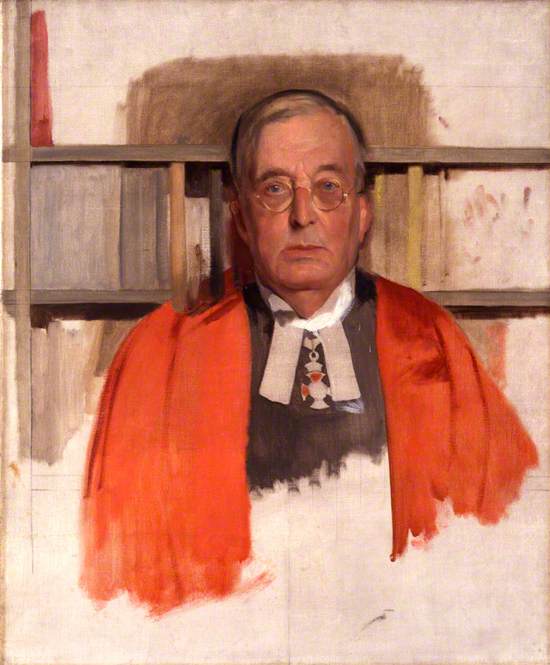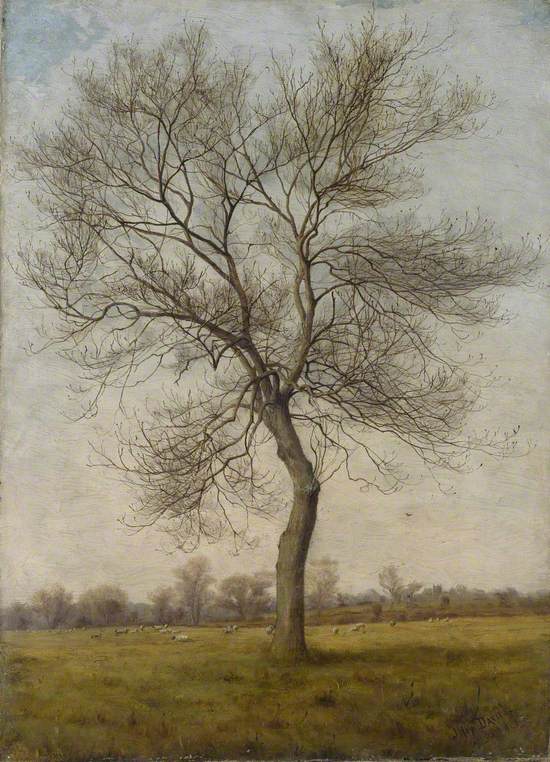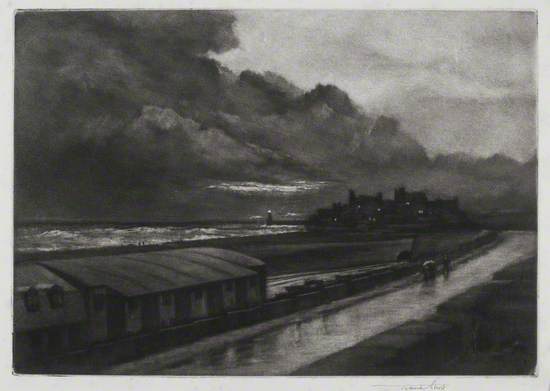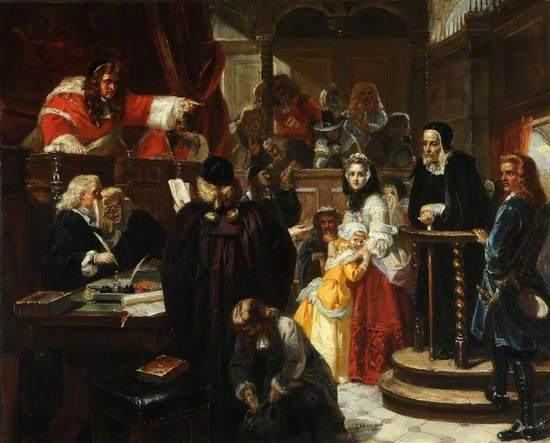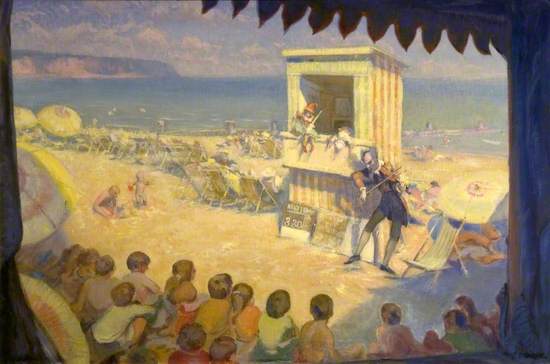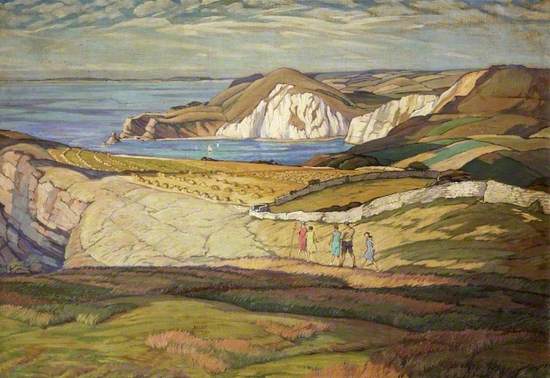The ghost stories of Montague Rhodes James have been unnerving and entertaining readers for over a century and are regarded as amongst the best in the genre. This curation highlights some of James' best stories with artworks related to the subject or location of the tales. Don't read this in the dark!
Montague Rhodes James (1862–1936)
Born in 1862, M. R. James was brought up in Livermere, Suffolk, where his father was Rector. Educated at Eton and King's College, Cambridge, James spent much of his life as an antiquarian and medieval scholar.
James started writing supernatural tales to entertain his friends by the fireside at Christmas. His stories were brought to a wider audience in 1904, with his publication 'Ghost Stories of an Antiquary'. Three more anthologies followed before his death in 1936.
Gerald Festus Kelly (1879–1972)
Oil on canvas
H 73.3 x W 61 cm
National Portrait Gallery, London
Lost Hearts
In James' story 'Lost Hearts', an orphan boy, Stephen, is sent to live with an elderly distant cousin, Mr Abney, a scholar of pagan religion. Despite being outwardly welcoming, it becomes clear that Abney has murderous intentions towards the boy.
Abney's desire was to imitate Simon Magus who 'was able to fly in the air, to become invisible, or to assume any form he pleased, by the agency of the soul of a boy … he had murdered'. To achieve this, Abney's plan is to remove Stephen's heart as part of a ritual to be performed at midnight on 24 March. Abney is stopped from completing his diabolical plan at the last minute by the ghosts of two young children he had previously murdered.
Liberale da Verona (c.1445–c.1526)
Tempera on panel
H 30.5 x W 56.2 cm
The Fitzwilliam Museum
The Ash Tree
'What, then, will it be, I wonder, that scratched and rustled so – ay, and covered the dust on my sill with lines and marks?'
In 'The Ash Tree', Sir Matthew Fell accuses a local woman of witchcraft, who is then condemned to death. Before she is hung, she repeats the words 'There will be guests at the Hall'. Soon afterwards, small creatures are seen running up and down the trunk of the ash tree beside the Hall and Sir Matthew is found 'dead and black' in his bed.
After the witch's grave is disturbed many years later, the same fate befalls his grandson, Sir Richard. The ash tree is cut down, revealing a nest of enormous spiders and the body of a woman 'clearly dead for a period of fifty years'.
James Hey Davies (1844–1930)
Oil on canvas
H 55.2 x W 39.2 cm
Manchester Art Gallery
Count Magnus
'Are you awake, Count Magnus? Are you asleep, Count Magnus?'
In 'Count Magnus', Mr Wraxall is travelling around Sweden and finds himself in Gothland, in a manor house close to a church where the eponymous Count Magnus is entombed. Wraxall finds out that the Count had been on a 'Black Pilgrimage' and visited the place where is was believed the Antichrist was to be born. He was thought to have brought 'something' back with him.
Throughout the story, each of the padlocks keeping the Count's sarcophagus locked, are opened and clatter to the floor in the mausoleum. Wraxall has inadvertently released Count Magnus and 'something else'. He is followed back to England by two figures in dark cloaks...
Luca Carlevarijs (1663–1730)
Oil on canvas
H 16.7 x W 9.3 cm
Paintings Collection
'Oh Whistle, and I'll Come to You, My Lad'
'...I mean to go to the East Coast – in point of fact to Burnstow...'
In James' famous story, 'Oh Whistle, and I'll Come to You, My Lad', the young Professor, Parkins, holidays on the east coast, improving his golf and undertaking antiquarian pursuits. Digging around in the ruins of a medieval preceptory, he finds an old metal whistle with the Latin inscription 'QUIS EST ISTE QUI VENIT' (who is this who is coming). Parkins blows the whistle and finds that he has summoned something terrifying, with an 'intensely horrible face of crumpled linen'.
James based the location of the story, Burnstow, on Felixstowe in Suffolk.
Horace Ernest Twaits (1895–1962)
Oil on canvas
H 40 x W 50 cm
Felixstowe Museum
The Mezzotint
In the story 'The Mezzotint', Mr. Williams, the curator of a university art museum receives a mezzotint from an art dealer. The very disturbing engraving changes each time Mr. Williams and the colleagues he enlists look at it. In the end, it is suggested that the night-time engraving depicts a vengeful poacher named Gawdy, returning from the grave to kidnap and murder the infant heir of a Mr. Arthur Francis. Gawdy had been hanged for shooting a gamekeeper while poaching on Francis' land.
Mezzotint is a monochrome printmaking process. There are several artworks made with this method on Art UK, including this atmospheric print of a wet evening at Seaford, East Sussex.
Frank Short (1857–1945)
Mezzotint on paper
H 17.8 x W 24.8 cm
Rye Art Gallery
Casting the Runes
In 'Casting the Runes' the sinister Mr Karswell puts a terrible curse on Edward Dunning, following his rejection of Karswell's paper on 'The Truth of Alchemy'. The curse is passed on to the unsuspecting Dunning on a slip of paper covered in Runic letters.
With three months left before he is apparently to meet an untimely end, Dunning discovers that he can transfer the curse if he can pass the Runic letters back to Karswell without his knowledge. Dunning succeeds in his plan as Karswell is fleeing for the Continent. A few days later, Karswell is dead; ostensibly killed by a falling stone from St Wulfram's Church, Abbeville, but with the implication that he has fallen victim to the curse.
Alexander Formier (attributed to)
Oil on canvas
H 89 x W 70 cm
Museum of Timekeeping
Martin's Close
The story 'Martin's Close' is recounted through the 17th-century court papers of George Martin, who is on trial for the murder of the naïve Ann Clark. The spirit of the murdered girl returns to torment Martin and ultimately seal his fate.
The trial in the story is presided over by the real-life Judge Jeffreys (1645–1689), the infamous 'Hanging Judge', who sentenced hundreds to death in the 'Bloody Assizes' that followed the Monmouth Rebellion of 1685 (just a year after the fictional events of the story). True to form, Jeffreys shows little regard for the wretched Martin; addressing the prisoner at the end of the trial, Jeffreys expresses his sincere hope that Ann Clark 'will be with you by day and by night till an end is made of you'.
Edward Matthew Ward (1816–1879)
Oil on canvas
H 42.2 x W 52.2 cm
Sheffield Museums
The Story of a Disappearance and an Appearance
James' tales of murder and supernatural vengeance, 'The Story of a Disappearance and an Appearance', features a disconcerting account of a homicidal Punch and Judy show.
Appearing in a dream to one of the main characters, the description of the show makes for uncomfortable reading: 'There was something Satanic about the hero. He varied his methods of attack … But with them all I came to dread the moment of death. The crack of the stick on their skulls … had here a crushing sounds as if the bone was giving way, and the victims quivered and kicked as they lay.'
Percival Arthur Wise (1884–1968)
Oil on canvas
H 59.5 x W 89.5 cm
Poole Museum Service
A Warning to the Curious
James based the location for 'A Warning to the Curious' on Aldeburgh, Suffolk, with its bleak landscape of 'marshes intersected by dykes to the south … flat fields to the north, merging into heath'.
The story tells of a young man, Paxton, who unearths an Anglo-Saxon crown, the last of three crowns buried to protect the English coast from foreign invasion. His actions draw the wrath of the crown's ghostly protector and Paxton realises that he must put the crown back. Paxton reburies the crown, but it's too late to avoid his fate; he is chased to his death along the coast and is found dead by the Martello Tower.
Geoffrey Scowcroft Fletcher (1923–2004)
Oil on canvas
H 55.5 x W 71 cm
Bury Art Museum
Wailing Well
The terrifying tale 'Wailing Well' was composed by James in 1927 for the gathering of the Eton College Boy Scouts, to be read around their camp fire at Worbarrow Bay, Dorset.
A group of boy scouts on a summer camp are forbidden to enter a nearby field. One disobedient boy, Stanley Judkins, ignores the warnings about four evil spirts dwelling by the well in the centre of the field and sets off to investigate. His friends watch in horror as Judkins is pursued by 'hideous black figures' before a 'crouched figure behind Stanley sprang at him and caught him about the waist'. Judkin's lifeless body is recovered from the copse, his ghost joining the others forever haunting the well.
Philip Leslie Moffat Ward (1888–1978)
Oil on canvas
H 69.5 x W 101 cm
Russell-Cotes Art Gallery & Museum
Explore artists in this Curation
View all 11-
 Percival Arthur Wise (1884–1968)
Percival Arthur Wise (1884–1968) -
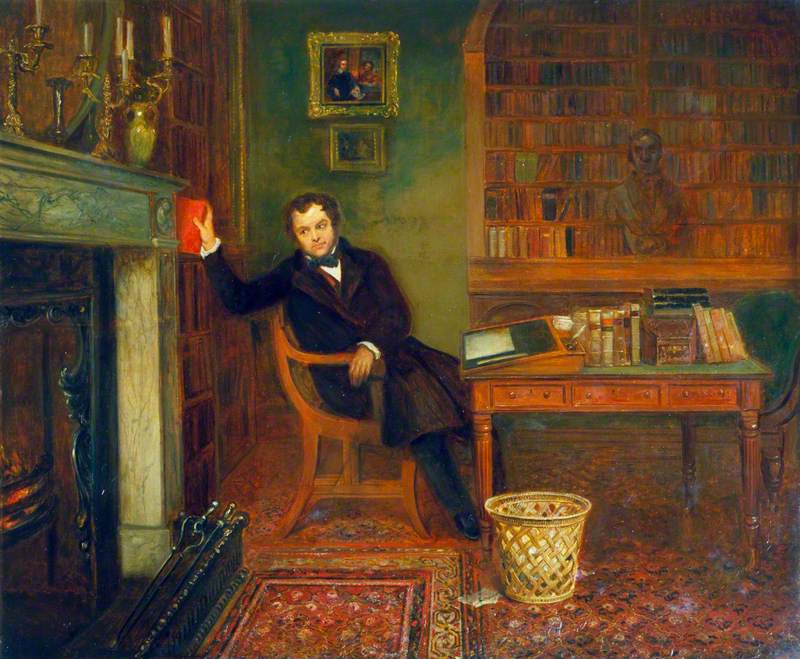 Edward Matthew Ward (1816–1879)
Edward Matthew Ward (1816–1879) -
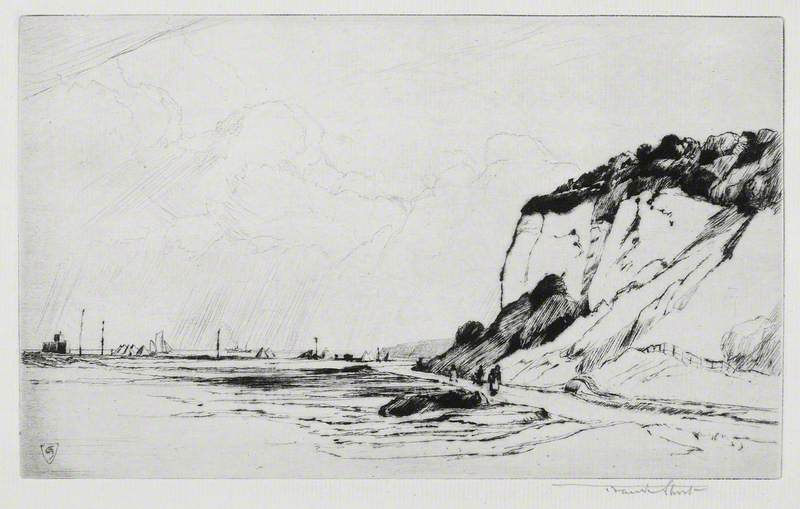 Frank Short (1857–1945)
Frank Short (1857–1945) -
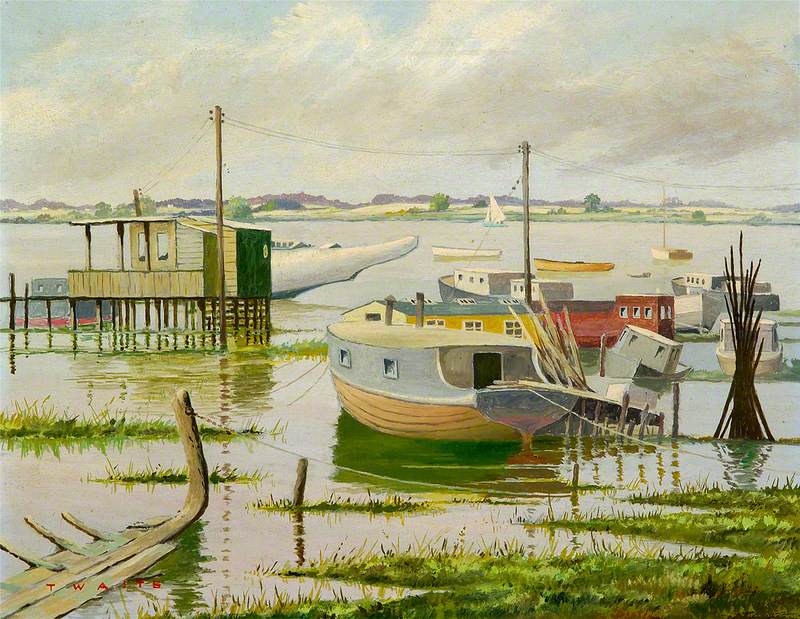 Horace Ernest Twaits (1895–1962)
Horace Ernest Twaits (1895–1962) -
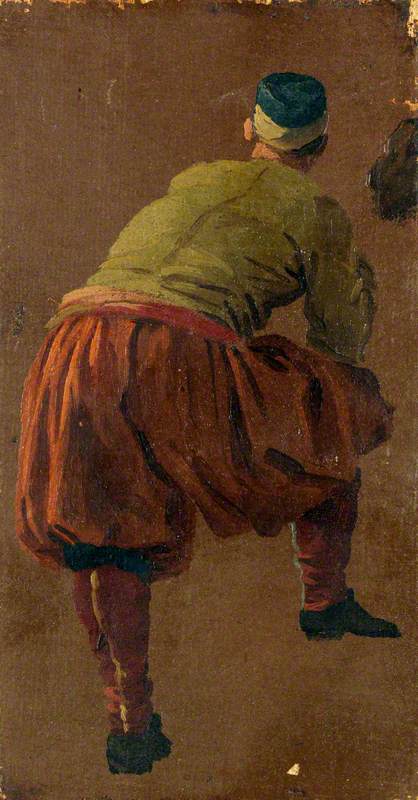 Luca Carlevarijs (1663–1730)
Luca Carlevarijs (1663–1730) -
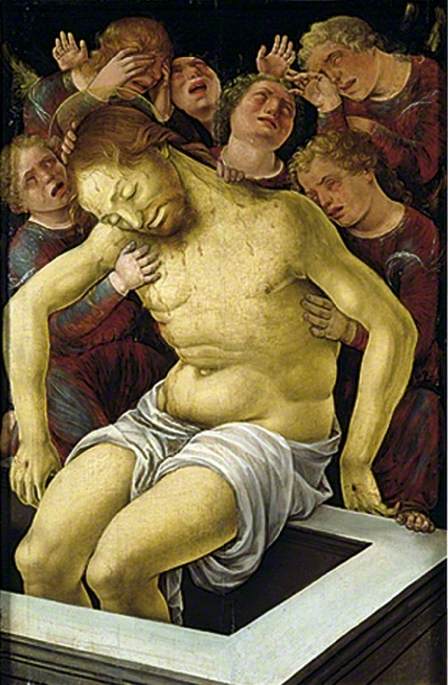 Liberale da Verona (c.1445–c.1526)
Liberale da Verona (c.1445–c.1526) -
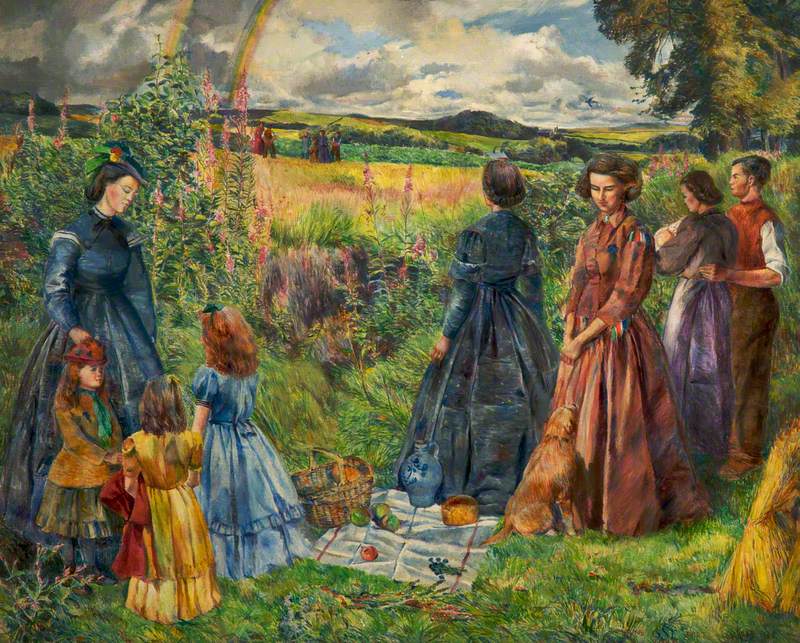 Geoffrey Scowcroft Fletcher (1923–2004)
Geoffrey Scowcroft Fletcher (1923–2004) -
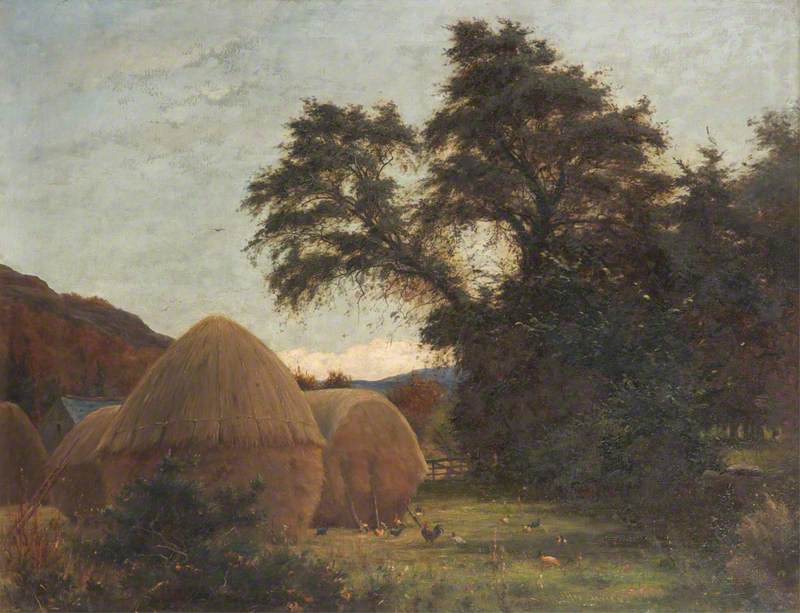 James Hey Davies (1844–1930)
James Hey Davies (1844–1930) -
 Alexander Formier
Alexander Formier -
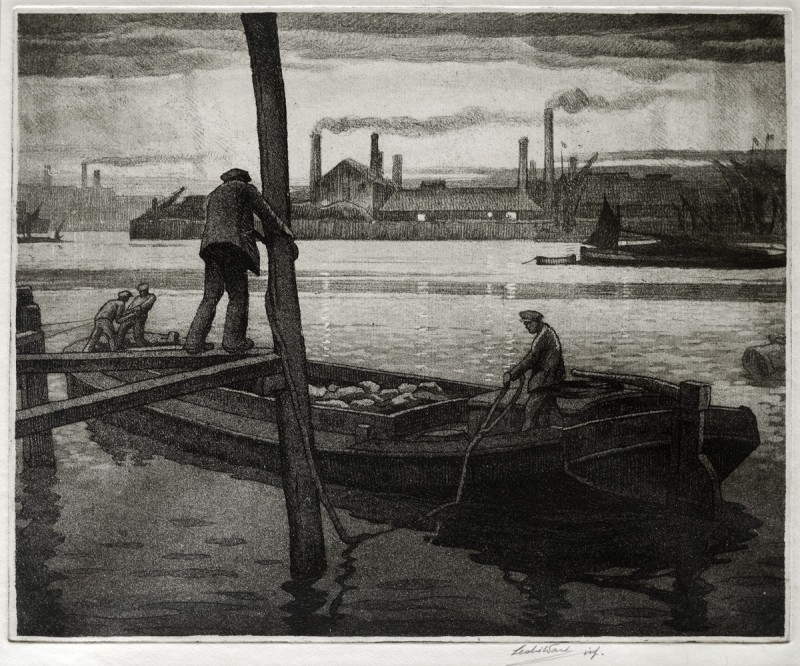 Philip Leslie Moffat Ward (1888–1978)
Philip Leslie Moffat Ward (1888–1978) - View all 11
